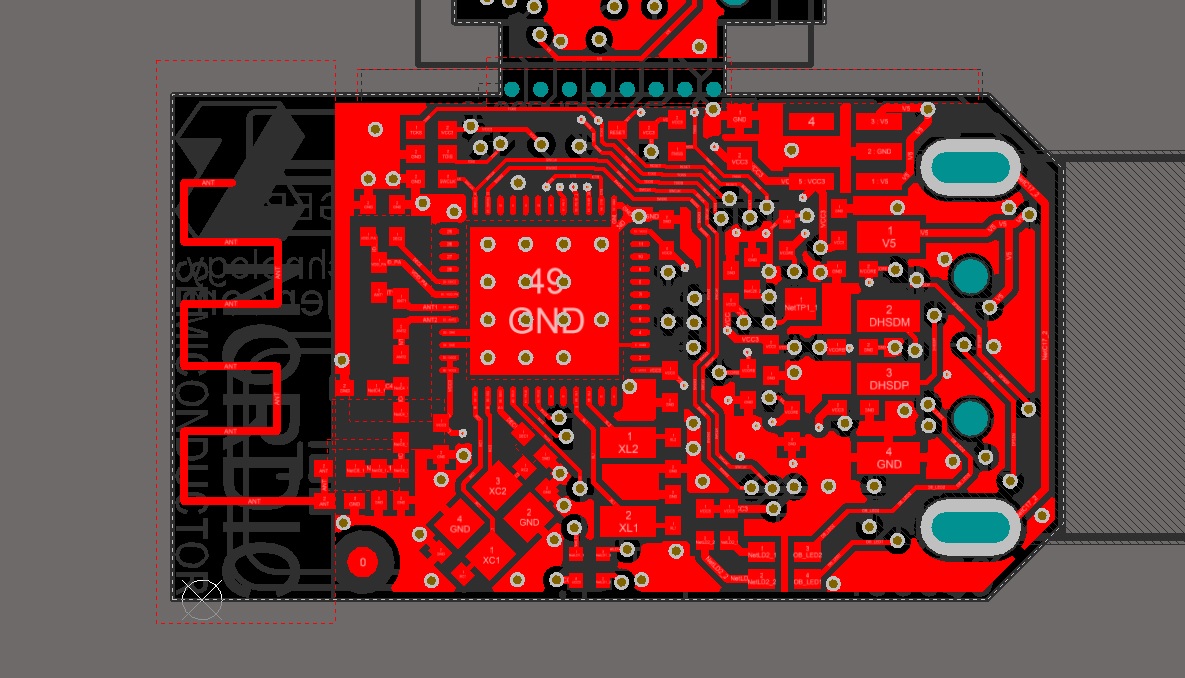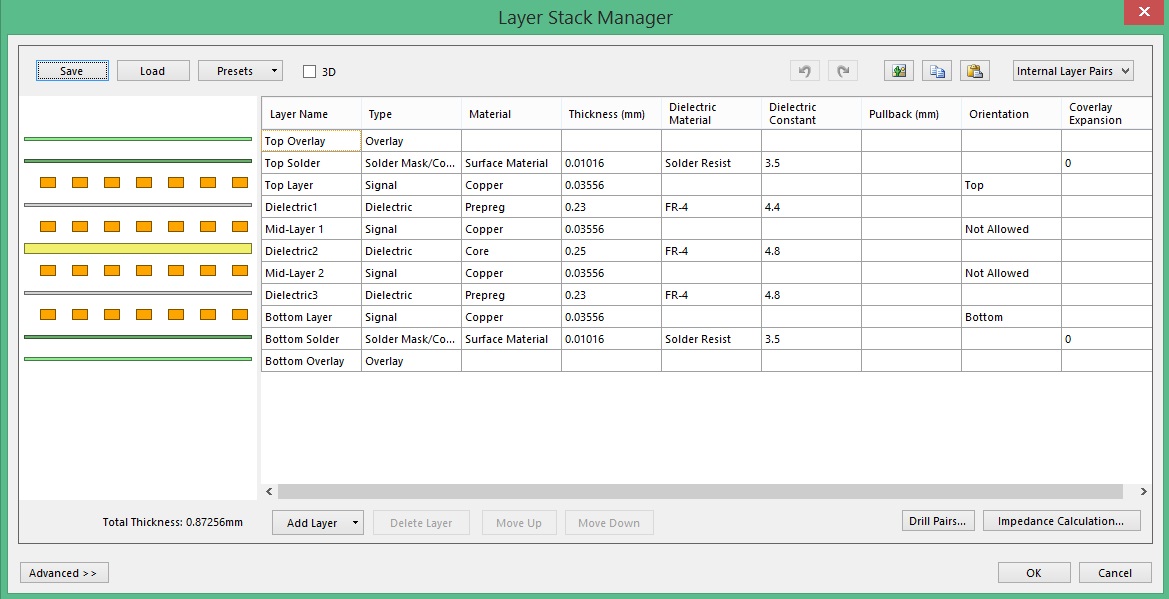Hello! I am designing PCA10000 based PCB. Unfortunately my manufacturer can't make PCB using prepegs and cores that used in PCA10000 (4.4 and 4.8). They can make using 4.6 core and 3.9 prepreg. So, it seems I need redesign PCB project? What is the best way to do that without loosing antenna performance? I tried to simulate PCA10000 pcb + antenna using Ansys HFSS:




Here is HFSS project: cloud.mail.ru/.../Txe2ouz4d My simulation result shows me that there is two resonating frequencies: 2.49 GHz and 2.62 GHz. Could someone advise me does it is a mistake? Should I now simulate a pcb with available dielectric constant? Which frequency should be the reference point?
Also I can't understand why impedance of antenna is 64 OHm and not 50 OHm? I get that using trace width = 0.256mm, Trace Thickness = 0.03556, Substrate Height = 0.23 mm and Substrate Dielectric = 4.4.


